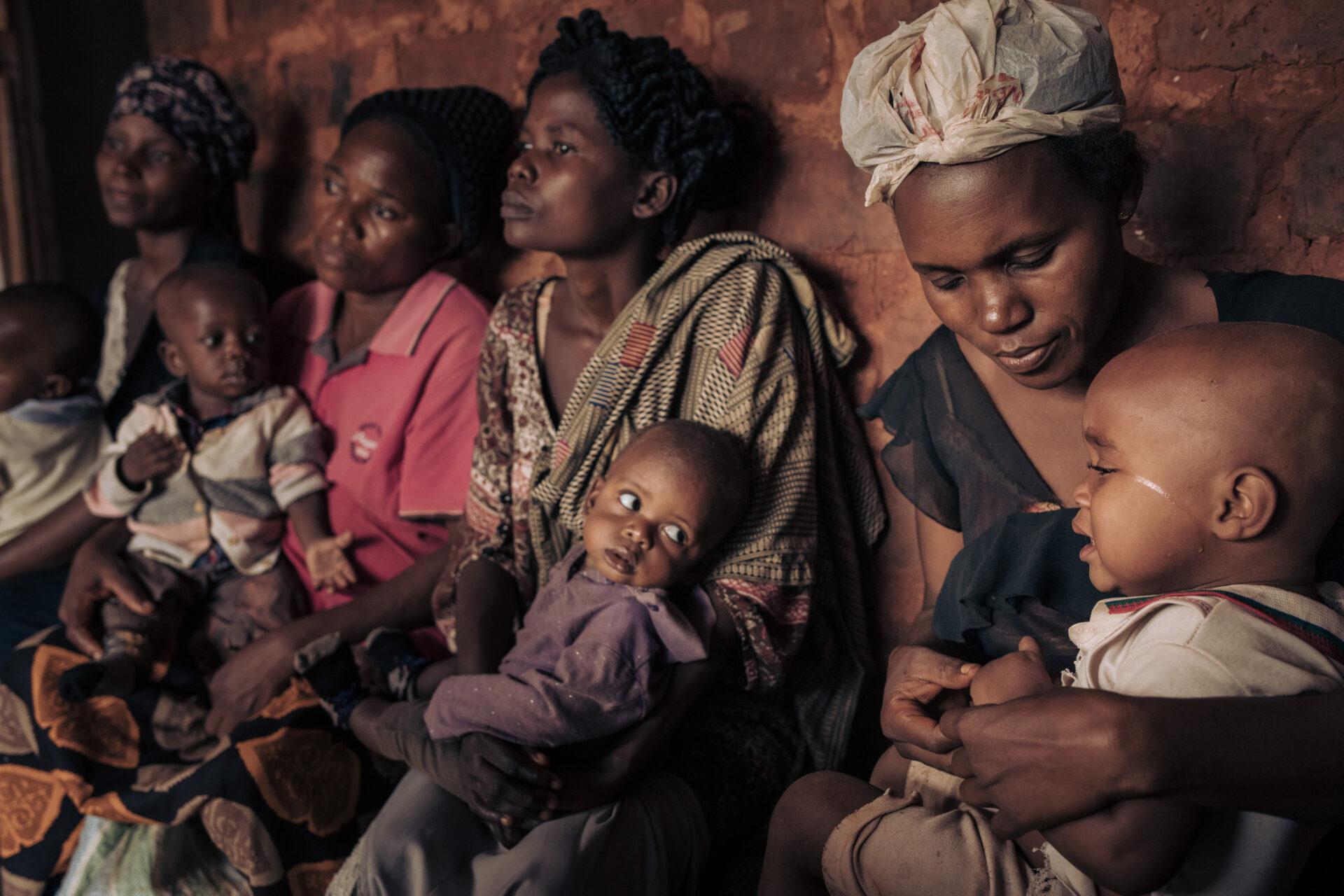According to the latest Integrated Food Insecurity Classification (IPC) report, almost 28 million Congolese, or more than a quarter of the population, will be acutely food insecure (IPC phase 3 or higher) between January and June 2025. This marks an alarming increase of 2.5 million people compared to projections published in October 2024.
The sharp deterioration is being driven by armed conflict, systemic poverty, lack of access to basic services and repeated health and climate-related shocks. Millions of families are being pushed to the brink, depleting their resources, adopting negative coping strategies to try to meet their basic food needs, going without healthcare and suffering from high levels of acute malnutrition.
The situation is particularly worrying in eastern provinces – Nord-Kivu, Sud-Kivu, Ituri and Tanganyik – where 10.2 million people are in IPC phase 3 or above. Among them are 2.2 million internally displaced people living in extreme poverty and are phase 3 or above, including 738,000 facing emergency food insecurity, phase 4.
In the west, 21% of the population of Maï-Ndombé, also affected by armed conflict, is in IPC phase 3 or above according to the October 2024 IPC report, and the Kwamouth territory, classified in IPC phase 4 in 2023, has not seen any signs of improvement.
Despite the scale of the crisis, humanitarian assistance is struggling to keep up with the scale of needs. The sudden funding freeze of USAID, the largest donor of humanitarian aid to the DRC, has led to urgent concerns that the situation will deteriorate further.
Florian Monnerie, Country Director in the Democratic Republic of Congo, said:
“The populations most at risk of hunger are those affected by the intensification of fighting and who have fled the violence. They are losing access to land, food, water and healthcare.
“Mobilizing funds for humanitarian and development aid has always been a challenge in such a chronic crisis. Today, due to a lack of resources, actors in the field are forced to suspend or reduce their activities. This puts thousands of lives at risk.
“We cannot turn a blind eye. It is essential that donors mobilise to prevent a further deterioration in the nutritional and health situation in the areas most at risk.”
Action Against Hunger, which had planned to treat 45,000 children with severe acute malnutrition and provide healthcare to 360,000 children through 2025-26, has been forced to halt new admissions since March. This is due first to the suspension of humanitarian operations, and then to a complete halt in payments from USAID. Only 2,000 children already in treatment are currently receiving care.
In Ituri, treatment is now chargeable in health centres where Action Against Hunger’s programmes have been suspended. Due to a lack of resources, many parents are no longer able to have their children treated in health centres and the condition of the children, especially the youngest, is worsening.
Since the end of March, Action Against Hunger has identified 258 children under five suffering from severe acute malnutrition who could not be treated. In addition, we are aware of six deaths of children suffering from severe acute malnutrition, and a further 18 deaths of children suffering from malaria or severe pneumonia, whose families were unable to raise the necessary funds in time to access treatment.
In the Kwamouth territory, in the Maï-Ndombé region, Action Against Hunger is the only humanitarian partner present in health centres. Since the suspension of activities financed by USAID, our teams have recorded thirteen deaths and dozens of children suffering from severe acute malnutrition who have been unable to receive treatment.
Notes to editors
Action Against Hunger has been present in the DRC since 1997, implementing nutrition, health, water and sanitation programmes in support of the Congolese health system, and in partnership with local and international partners. In 2024, more than 424,000 consultations were carried out and 27,819 children were treated for severe acute malnutrition.


